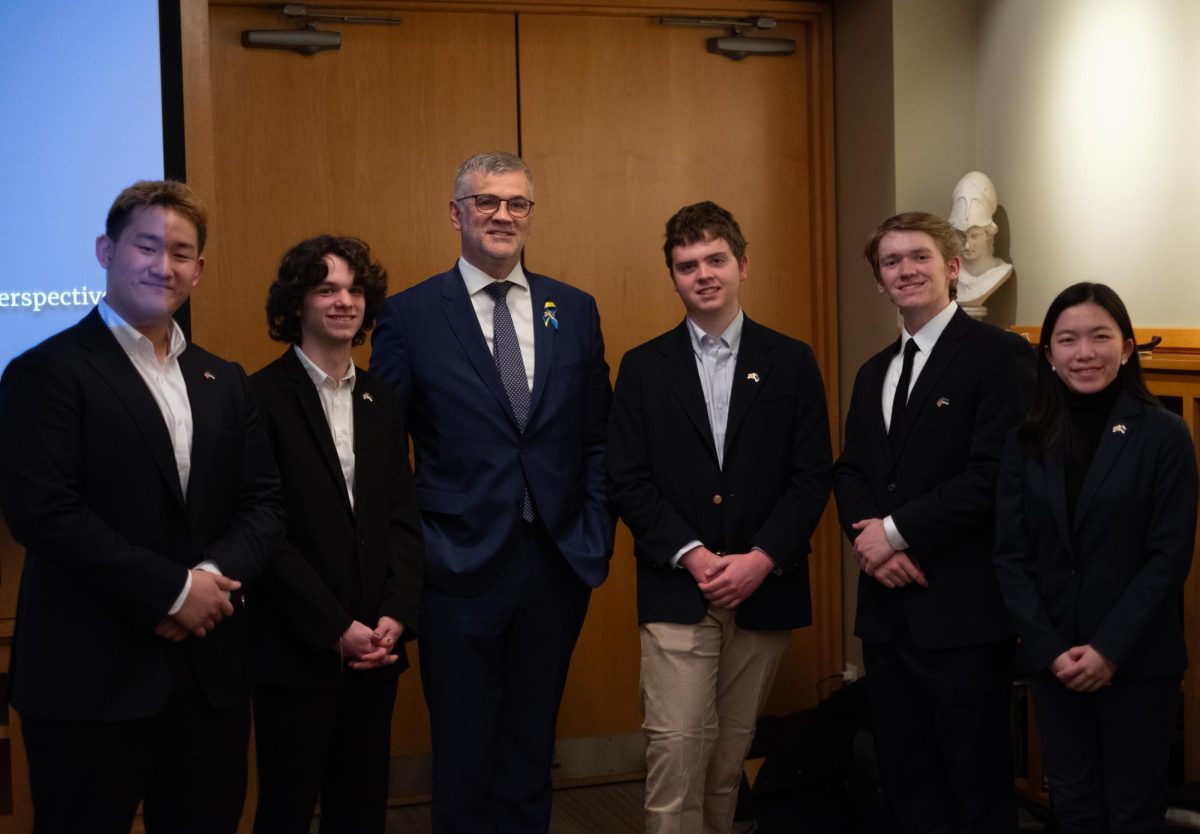Carleton students will soon use a new website to register for classes, pay tuition and check their grades. The college will move all of its academic and administrative operations to Workday by next Fall Term, discontinuing The Hub, a now outdated online system the college has used for more than 30 years. Students will be able to access some academic information on Workday starting Mar. 4. In May, students will use Workday to register for Fall Term 2024 classes, and between May and July, students will use the new platform to access 2024-2025 financial aid offers and pay tuition. The Hub still will be used to register for Spring Term 2024 classes and pay Spring tuition, but it will be gone entirely by Fall Term, a victim of its own antiquated technology.
Here’s a timeline of the switch to Workday:
- March 4: Students can view data on Workday as recently as from Fall 2023. This data will not be comprehensive and will gradually become more up to date.
- Mid-April: Students can track and update personal information on Workday. Students will need to update settings such as proxy access for tuition payment.
- May: Advising and course registration for Fall 2024 will be done on Workday.
- Mid-May to early June: Students will be able to view financial aid offers for the 2024-2025 academic year on Workday. This is a few months later than usual.
- June-July: Fall 2024 tuition billing and collection will be completed on Workday.
- November: Final grades will be released on Workday, and The Hub will be completely discontinued.
Carleton is switching to Workday because it has more functionality than The Hub, said Associate Provost Dr. Eric Egge ’94, a leader of the Workday project. “Workday has the ability to direct ‘paperwork’ in a way that our current system doesn’t,” he said, allowing students to more easily manage information, like indicating preferred names, setting up third-party access for tuition and other payments and generally having “a greater ability to initiate important processes and manage their own data in the system.” In contrast, The Hub’s developers decided to take the platform “in a direction that isn’t well-suited to Carleton’s needs,” he said.
Janet Scannell, Carleton’s chief technology officer, described The Hub during a Carleton Student Association meeting as a system built upon a mishmash of unsupported software. Third-party contractors recommended that Carleton move away from the aging platform, which was shifting its focus to community colleges, she said. She also said that Carleton needed a more updated system like Workday, which is cloud-based, receives bi-annual updates and has better security.
Workday, particularly on the financial front, will more fully automate documentation and tuition payments, reducing the need for “extensive human interaction,” said Linda Thornton, the college comptroller. “There [won’t be] emails going back and forth, then phone calls when emails [get] lost.” The new system “is designed to keep everyone fully informed of the status of a process once it has been initiated,” she said.
Students will see a “more modern, graphical interface” on Workday, Egge said, but “the interface itself is probably already familiar to many students, who have been using it to enter [their hours] for campus jobs.” He said that students who have tested the new system have generally given positive feedback.
On the academic front, Workday will give the administration more flexibility to manage course registration and course listings. “Over the next year or two you may see more variations on things like cross-listing or sophomore priority,” Egge said. But while Workday will manage final grades and academic records, it still will not enable students to see live grades more readily. “[I]f a faculty member wants to use an online gradebook in which students can see their current grade, then Moodle will still be their system of choice,” he said.
The financial transition to Workday will come with caveats, according to Danielle Hayden, director of student financial aid. Specifically, Carleton will soon be using two systems for finance: Workday, where students will see and pay tuition, and NetPartner, where students will view their financial aid offers. NetPartner will be “seamlessly” accessible through Workday, and Hayden said that while the new systems will look different from the old ones, they will function similarly.
Importantly, however, financial aid offers for the 2024-2025 academic year will not be visible on NetPartner until late May or early June, a few months later than usual. Hayden says that although that’s only “six weeks in advance of when the bill comes out for Fall Term… we’ll communicate missing documents or missing information ahead of time. Students just won’t be able to visually see their checklist or their financial aid.” The delay is caused by extra steps the administration is taking to ensure everyone is accounted for in the new system, but should not affect aid visibility in future years. Hayden expressed hope that “with [offers] being available before the fall bill, families will still have time to be able to review the information and reach out to our office to have conversations if [they have] any questions.”
A core principle of the college’s financial aid program, said Thornton, “is not only to meet the demonstrated financial need of all admitted students but also to deliver a consistent package.” Families can count on the college’s financial aid policy and program remaining the same; “it’s the technology platform supporting the program,” not the program itself, that’s changing, she said.
Additionally, students will have to reauthorize proxy access for parents or others to view finance activity and pay tuition, Thornton said. However, unlike on The Hub, income taxes will only be available to students and there will be no option to automatically forward them to others. And, she said, Workday will offer additional tuition payment-plan options, allow for easier access to financial statements and provide a more straightforward refunding process.
Efficiency was central to both Thornton and Hayden’s description of Workday. “I’m going to keep using [the word] ‘efficiency’ because that’s really what it comes down to,” said Hayden. “The less time we spend doing manual processes, the more time we can spend answering family questions [and] engaging [with students].”
Efficiency, however, comes at a price. Egge said that the three-year transition to Workday will cost Carleton between $10 million and $15 million by its completion. Most of that “covers the cost of our implementation partner, a company called Alchemy,” he said. But that quote only accounts for the transition from The Hub; he did not say how much it will cost to operate Workday after it is implemented.
Carleton selected Workday to replace The Hub because it “offered a combination of features that most closely matched our needs, and where we see ourselves going over the next decade or more,” said Egge. He also said that Williams, Cornell and other colleges and universities with needs similar to Carleton’s are adopting or have already adopted Workday.
Thornton said Workday will improve “the student experience. We feel like we’re trying to get technology to get out of the way… it’s been promised that technology will make our lives simpler and easier [and] we’re hoping that this evolution in our technology genuinely does deliver on that promise.”
During this transition process, Egge urged patience. “Making a transition like this always takes a lot of work, and it’s often uncomfortable to do familiar things in an unfamiliar system,” he said. “Many people are investing a lot of time and effort to make this transition as smooth as possible, and although things are never perfect at the start, I think we’ll be surprised at how soon the new system begins to feel like home.”










